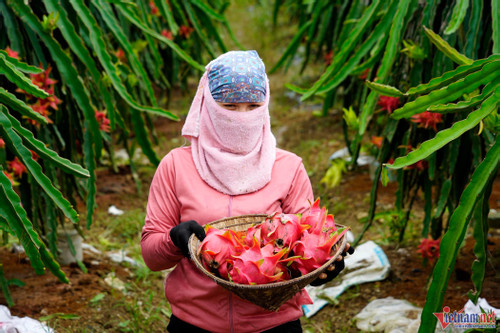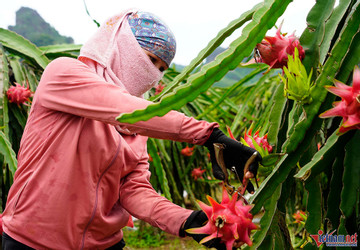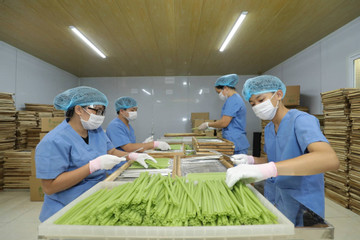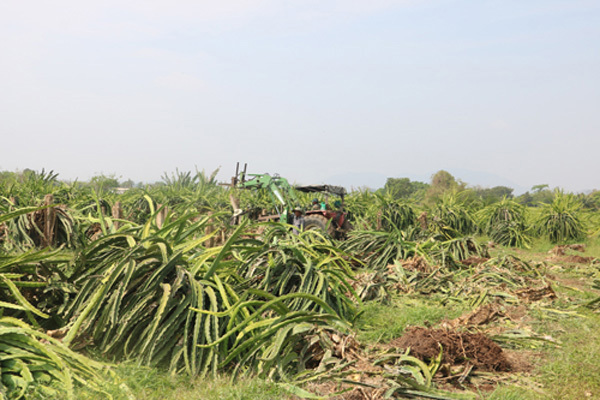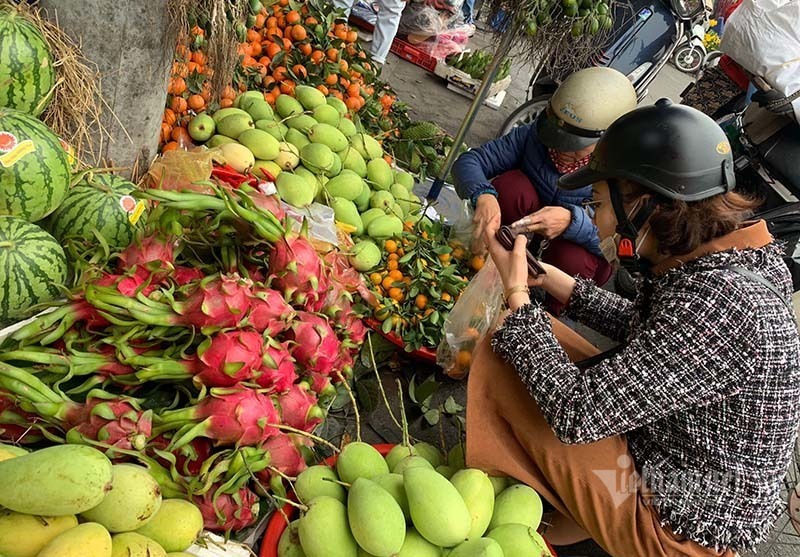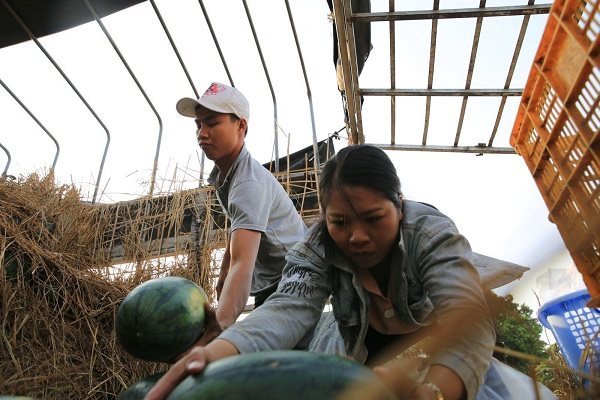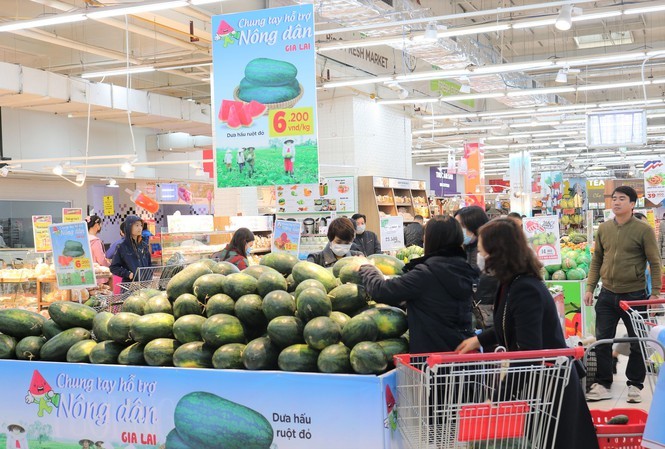- © Copyright of Vietnamnet Global.
- Tel: 024 3772 7988 Fax: (024) 37722734
- Email: evnn@vietnamnet.vn
dragon fruit
Update news dragon fruit
Vietnam advised to diversify markets as China expands dragon fruit growing area
With dragon fruit growing areas increasing rapidly, China has become nearly self-sufficient in the fruit. This poses a great challenge to Vietnam, a major dragon fruit producer which targets China as the major market.
Dragon fruit prices surge, farmers earn big
Dragon fruit prices have unexpectedly soared. Merchants are rushing to export to China.
Only in Vietnam: Shrimp-chip straws, dragon-fruit noodles
VietNamNet sums up the “odd news” in Vietnam last week.
Binh Thuan Province farmers cut down dragon fruit trees on losing China market
Dragon fruit farmers in Binh Thuan Province have cut down thousands of trees and switched to other crops after suffering heavy losses due to low prices.
1.4 million tons of ‘super food’ sells for only VND3,000 per kilo
In some European countries, dragonfruit is considered ‘super food’, priced at VND650,000 per kilogram. Vietnam has 1.4 million tons of the fruit each year and farmers sell it at only VND3,000 per kilogram.
VN dragonfuit sales sluggish in home market, but ‘hot’ in foreign markets
While dragonfruit in Vietnam has seen prices plummet, the fruit is being sold for VND200,000 per kilogram in Australian supermarkets and VND600,000 in the Netherlands.
First instant noodle product made from dragon fruit produced
The Ho Chi Minh City University of Food Industry (HUFI) have successfully researched and produced the first instant noodle product with dragon fruit ingredient in Vietnam.
Vietnam seeks new markets for farm produce
 The Ministry of Industry and Trade (MOIT) has asked its Vietnam Trade Offices (VTRs) overseas to help connect Vietnamese enterprises with foreign partners to boost farm produce exports.
The Ministry of Industry and Trade (MOIT) has asked its Vietnam Trade Offices (VTRs) overseas to help connect Vietnamese enterprises with foreign partners to boost farm produce exports.
Dragon fruit noodles? Firms create new food products as exports to China slump
 The Viet Nam Flour Corporation (Vikybomi) has created new food products made from wheat flour and farm produce such as dragon fruit and watermelon amid a reduction in fruit exports to China.
The Viet Nam Flour Corporation (Vikybomi) has created new food products made from wheat flour and farm produce such as dragon fruit and watermelon amid a reduction in fruit exports to China.
The ‘farm produce rescue’ method
 Some retailers have reportedto the Ministry of Industry and Trade (MOIT) that there is no more farm produce to rescue. But farmers still complain that their farm produce remains unsalable.
Some retailers have reportedto the Ministry of Industry and Trade (MOIT) that there is no more farm produce to rescue. But farmers still complain that their farm produce remains unsalable.
Farm produce stuck at border, but farmers don't want to sell
 Thousands of trucks are still heading for the Vietnam-China border gates, though the exports are getting stuck because of the Covid-19 epidemic.
Thousands of trucks are still heading for the Vietnam-China border gates, though the exports are getting stuck because of the Covid-19 epidemic.
VN farm produce exporters urged to look at markets other than China
 Exporters of agricultural products, especially dragon fruit, must improve quality and focus on the domestic and new export markets and reduce their dependence on the Chinese market amid the current epidemic outbreak, experts have said.
Exporters of agricultural products, especially dragon fruit, must improve quality and focus on the domestic and new export markets and reduce their dependence on the Chinese market amid the current epidemic outbreak, experts have said.
Farm exports meet barriers on the way to China
 China has fallen from the No 1 position on the list of Vietnam’s biggest rice export markets into the seventh position. The growth of seafood exports to the market has also slowed down.
China has fallen from the No 1 position on the list of Vietnam’s biggest rice export markets into the seventh position. The growth of seafood exports to the market has also slowed down.
Chinese businesses control dragonfruit collection units in Vietnam
The white-flesh and red-flesh dragon fruit areas in Binh Thuan and Long An provinces are being controlled by Chinese businesses who have come to Vietnam to set up collection storehouses.
Chinese cross-border policy hurting Vietnam’s exports
Vietnamese exporters have been warned of difficulties in 2019 because of changes in China’s cross-border trade policies.
Chinese rent land in Laos, change production habits
VietNamNet Bridge - Seventy-five percent of Vietnam’s farm produce is exported to China, but the figure could fall as China grows more of its own food.
Vietnamese dragon fruit farmers worried as Chinese market shrinks
VietNamNet Bridge - China has been expanding the growing area of many kinds of farm produce and has gradually reduced imports from Vietnam.
Vietnam companies take cautious steps towards Thai market
VietNamNet Bridge - Vietnamese enterprises have been seeking a way to penetrate the Thai market to re-establish a trade balance between the two countries.
Vietnamese 9X student invents bioproduct to preserve fruit
VietNamNet Bridge - The bioproducts that help keep farm produce fresh for 15-20 days are made of waste seafood products such as crab and shrimp.
Vietnamese scientists invent light to control plant flowering
VietNamNet Bridge - The specialized lights that Vietnamese scientists have developed save up to 60 percent of electricity consumption and ensure the flowering of plants.
